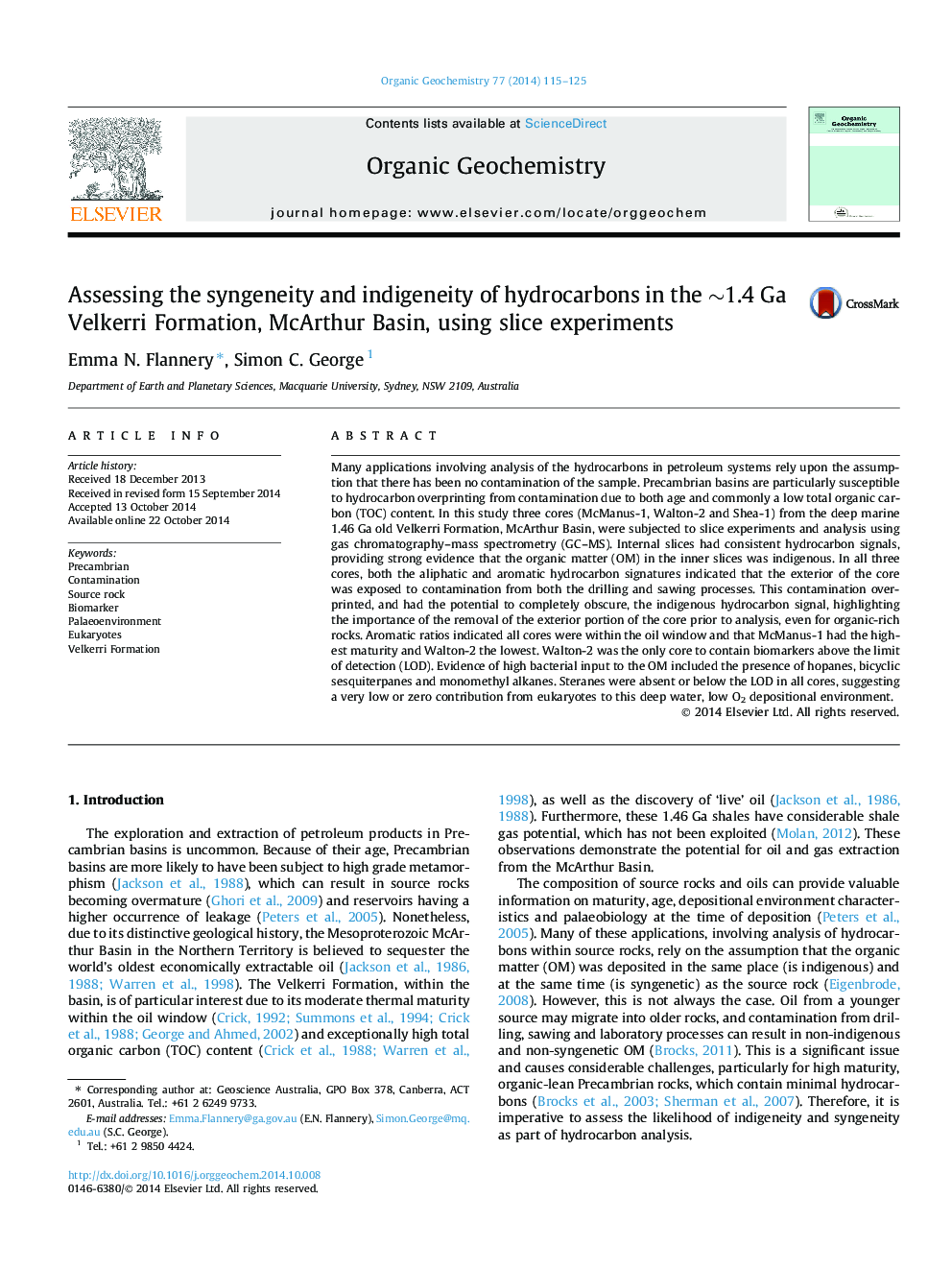| Article ID | Journal | Published Year | Pages | File Type |
|---|---|---|---|---|
| 5161779 | Organic Geochemistry | 2014 | 11 Pages |
Abstract
Many applications involving analysis of the hydrocarbons in petroleum systems rely upon the assumption that there has been no contamination of the sample. Precambrian basins are particularly susceptible to hydrocarbon overprinting from contamination due to both age and commonly a low total organic carbon (TOC) content. In this study three cores (McManus-1, Walton-2 and Shea-1) from the deep marine 1.46Â Ga old Velkerri Formation, McArthur Basin, were subjected to slice experiments and analysis using gas chromatography-mass spectrometry (GC-MS). Internal slices had consistent hydrocarbon signals, providing strong evidence that the organic matter (OM) in the inner slices was indigenous. In all three cores, both the aliphatic and aromatic hydrocarbon signatures indicated that the exterior of the core was exposed to contamination from both the drilling and sawing processes. This contamination overprinted, and had the potential to completely obscure, the indigenous hydrocarbon signal, highlighting the importance of the removal of the exterior portion of the core prior to analysis, even for organic-rich rocks. Aromatic ratios indicated all cores were within the oil window and that McManus-1 had the highest maturity and Walton-2 the lowest. Walton-2 was the only core to contain biomarkers above the limit of detection (LOD). Evidence of high bacterial input to the OM included the presence of hopanes, bicyclic sesquiterpanes and monomethyl alkanes. Steranes were absent or below the LOD in all cores, suggesting a very low or zero contribution from eukaryotes to this deep water, low O2 depositional environment.
Related Topics
Physical Sciences and Engineering
Chemistry
Organic Chemistry
Authors
Emma N. Flannery, Simon C. George,
